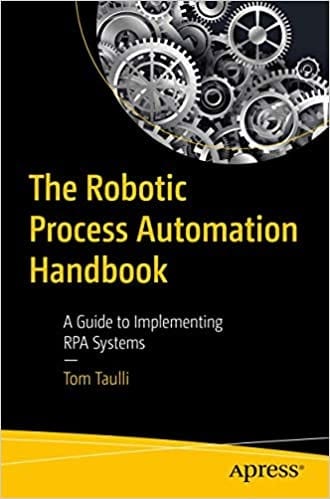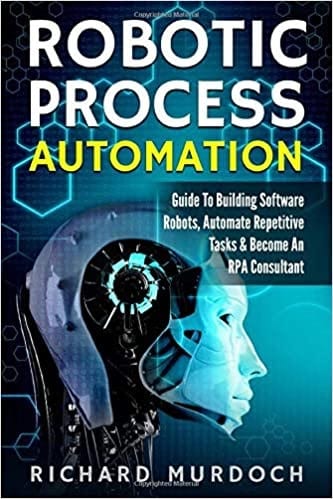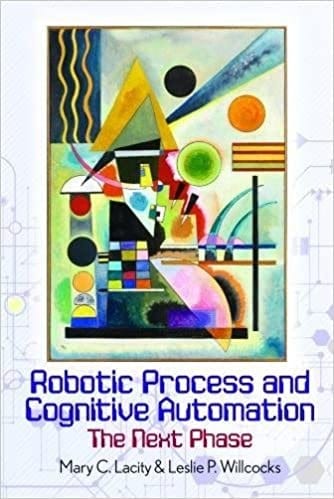Organizations rely on RPA (robotic process automation) to reduce expenses and increase efficiency. Learning how to incorporate RPA into any business can be very lucrative. In today’s market, managers are increasingly turning to RPA for that competitive edge.
This technology is perfect for managers, business analysts, software developers, and IT gurus. This guide will give you the best and most reliable resources to help you learn RPA.
What Is RPA?
Robotic process automation is a process whereby a particular set of instructions control technology in your business. The “robots” are emulated and integrated to mimic human behavior in executing rule-based processes. These robots can capture and manipulate data as well as interpret and trigger responses with different systems to perform automated tasks.
They can also interact with a system just like a human. However, they are faster, more reliable, and operate without breaks. There is much less chance of error in tasks executed by RPA.
What Is RPA Used For?
This software handles high-volume, recurring tasks usually performed by humans. Companies use RPA to monitor and effectively adapt to changing environments and new situations. They are great for achieving repetitive objectives with no security, quality, or efficiency issues.
This tool is essential in business process automation. Below are the main benefits of RPA.
- Onboarding customers. This process is usually very tedious in sales, finance, accounting, and human resources. An RPA tool can help significantly reduce traditional paperwork and vetting. And you can integrate it with your existing system.
- Generating report. This can be an overwhelming amount of work for a human. Generating reports quarterly, bi-annually, or annually can derail your workflow. But an RPA can easily automate this process. This frees your employees for different tasks.
- Processing payroll. The RPA tool automates this process by collecting and connecting data from different systems like accounts payable, a general ledger, and even employee management. This can cut the time dedicated to payroll significantly.
- Processing orders. Manually processing an order includes data entry, address verification, printing invoices, updating inventory, and replenishing diminished stock. Using an RPA, this process is simplified and shortened.
- Customer service and maintenance. After onboarding, customers tend to change their information like their physical address or their last name. An RPA ensures this data is updated in real-time.
- Checking compliance in financial services. RPA can quickly check the existing regulations or tax requirements for different businesses.
Features of RPA Tools
RPA is made up of a wide range of tools for different solutions. These tools have crosscutting features, weaknesses, and strengths. Below you will learn which features to look for and their importance.
Scalability and Integration
RPA can be deployed across different platforms such as the cloud, terminal services, or virtual machines. It can also integrate well with other technologies like Oracle FIS and SAP.
Security and Governance
This tool is great in ensuring quality and monitoring compliance risk. It can help you run a business meticulously. The RPA database is also secured and centrally encrypted in relation to other systems.
Rule-Based Executions
Your robots can handle repetitive tasks intelligently, proactively, and predictably.
Debugging
An RPA tool can help analyze data and resolve issues without making changes to the procedure.
Learning RPA

The first step in learning any new skill is identifying your learning style. Which learning process will give you the best results? Some people do well learning in-person, while others prefer reading books, and still others like online courses and watching tutorials.
Your best type of study will take into account your cognitive ability, schedule, and interests. Below you will find a list of the best resources at your disposal.
How Long Does It Take to Learn RPA?
This really depends. Are you a novice or experienced programmer? To understand the basics may take up to 40 hours but can be longer if you want to understand RPA at an advanced level.
The basis of RPA allows you to manipulate items on the user interface, process data, and transfer information to different systems. There are a lot of topics to be covered that are essential in making you the best programmer possible.
How to Learn RPA: Step-by-Step
These steps are instrumental in helping you learn about RPA.
- Install available tools. Before you begin any class, first obtain any of the available RPA tools.
- Watch tutorials. Tutorials online are a great way to learn additional information about these tools. You will also learn some of the best practices, mishaps, and available opportunities.
- Enroll in classes. The best way to learn and network is by attending class. These can be filled with beginners, experts, and gurus from different industries.
- Read books. Experts in the industry are more than generous with their intellectual property. Books are an excellent way of learning new concepts in RPA.
- Practice. Learning does not end in class. You have to keep refreshing your knowledge by practicing to master RPA.
The Best RPA Courses and Training
Today, the relevance of RPA for businesses is undeniable. With the growing demand for people with knowledge of RPA, more programmers are learning this important tool.
But the type of platform you choose to learn on makes a huge difference. It’s a good thing there are many options available to learn RPA.
Below you will find the best RPA courses and training.
Best In-Person RPA Classes
There are many advantages of an instructor-led class in RPA. Students can maximize the benefits of an online class when learning with a teacher. They can ask questions and interact with others during and after class. And the instructor can easily pinpoint the challenges a student faces to optimize their experience.
This list is instrumental for people who prefer one-on-one sessions with instructors.
RPA Training and Online Certification Course
- Provider: MindMajix
- Cost: $590
- Length: 30 hours
- Prerequisite: None
This is an excellent course that has a flexible schedule and is led by an instructor. You will get an overview of RPA, learn automation applications, and discover RPA UiPath.
Robotic Process Automation Training Course
- Provider: Multisoft Virtual Academy
- Cost: $590
- Length: 1 month/30 hours
- Prerequisite: None
This is an excellent training course that teaches professionals the basics to more advanced aspects of RPA. It’s especially great for professionals who want to use artificial intelligence to automate their data flow.
Best Online RPA Classes
RPA can provide many solutions for your business, no matter the industry. There are more and more people who want to learn this automation tool. That means there is also a growing number of classes provided online for programmers to learn about RPA and its benefits.
This list features the best programs online to start learning.
UiPath – Level 1 Robotic Process Automation
- Provider: Udemy
- Cost: $13.99
- Length: 26 hours
- Prerequisite: RPA overview class
Here you will learn how to install UiPath Studio on Windows, understand its tools, schedule executions, and use exception handling to handle errors. You should first take the RPA Tech Primer and familiarize yourself with Windows.
Introduction to RPA
- Provider: Cloud Foundation
- Cost: $160
- Length: 26 hours
- Prerequisite: None
Best Free RPA Courses
There is no need to break the bank. There are courses where you can learn for absolutely no cost. Here is a list of the best available free courses.

"Career Karma entered my life when I needed it most and quickly helped me match with a bootcamp. Two months after graduating, I found my dream job that aligned with my values and goals in life!"
Venus, Software Engineer at Rockbot
Cognitive Solutions and RPA Analytics
- Provider: Coursera
- Cost: Free
- Length: 5 hours
- Prerequisite: None
In this course, you will learn how to explain the functions of cognitive solutions, define the IQ Bot portal, and use analytics within RPA. By the end, you will be well versed with document validation, progress monitoring, and bot training.
RPA Lifecycle: Deployment and Maintenance
- Provider: Coursera
- Cost: Free
- Length: 6 hours
- Prerequisite: None
This is a great course to learn about Web Control Room and how to troubleshoot issues by applying best practices.
Best RPA Courses with Certifications
Some companies require a certificate to prove your skills in automation. Here are some of the best courses available:
Robotic Process Automation – RPA Overview
- Provider: Udemy
- Cost: $11.99
- Length: Self-paced
- Prerequisite: Modern Windows computer
This is an excellent course to obtain an RPA certification. You will learn about RPA and understand its most relevant tools. You will need to have some knowledge of Excel and software applications to complete your certification.
RPA – Blue Prism Online Training
- Provider: Multisoft
- Cost: $390
- Length: 24 hours
- Prerequisite: None
Multisoft Virtual Academy offers a course about inputs and outputs, process flow, object studio, and additional advanced features. This is a great course for fresh graduates, software engineers, working professionals, business intelligence professionals, or digital marketers.
Best RPA Books
There are many ways to learn about RPA. Reading books may seem traditional, but it is quite effective, especially for people who like self-paced studying.
Below is a list of the best available books on RPA.
The Robotic Process Automation Handbook: A Guide to Implementing RPA Systems

This book explains how to develop a strategy to implement RPA in your organization.
Robotic Process Automation: Guide To Building Software Robots, Automate Repetitive Tasks & Become An RPA Consultant

In this book, the author covers robot security, RPA use cases, and an overview of RPA’s impact on enterprises.
Robotic Process and Cognitive Automation: The Next Phase

This is an excellent book for learning different RPA principles, the latest research, and different applications of RPA. You will read interviews with major clients and analysts as well as learn about the future of work.
Best Online RPA Resources
There’s a ton of information about RPA online. These information sources are essential in teaching both novices and experts about the software. They consist of tutorials, free trials, and material to learn best practices.
UiPath Academy
This is an excellent platform to learn about RPA. It provides role-based training for business analysts, implementation managers, and RPA developers.
Udemy
On this platform, you will learn how to deploy RPA robots, automate real-world processes, and tackle UiPath.
Should You Study RPA?
Robotic process automation can perform functions quickly, tirelessly, and accurately. Due to RPA, employees are made more efficient. Learning RPA can be very beneficial for any programmer or business owner.
Through RPA, you can map out the processes of your business, establish intelligent automation, minimize problems with data entry, improve security and compliance, and increase your return on investment.
The career prospects of learning RPA is also a plus. Companies are always seeking to minimize expenses and time consumed by their employees. And the demand for people who can help them achieve this is high.
About us: Career Karma is a platform designed to help job seekers find, research, and connect with job training programs to advance their careers. Learn about the CK publication.



